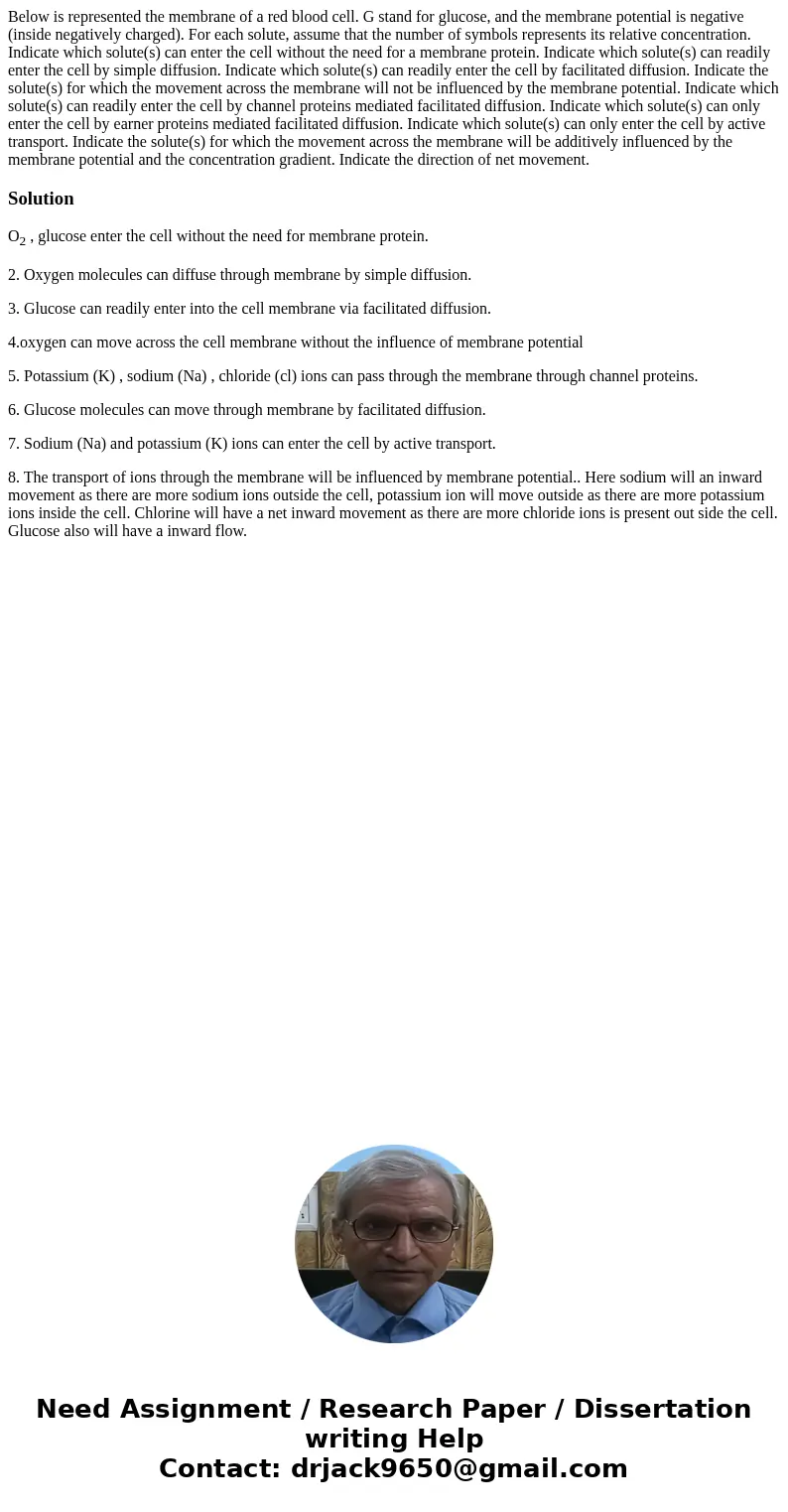Below is represented the membrane of a red blood cell G stan
Solution
O2 , glucose enter the cell without the need for membrane protein.
2. Oxygen molecules can diffuse through membrane by simple diffusion.
3. Glucose can readily enter into the cell membrane via facilitated diffusion.
4.oxygen can move across the cell membrane without the influence of membrane potential
5. Potassium (K) , sodium (Na) , chloride (cl) ions can pass through the membrane through channel proteins.
6. Glucose molecules can move through membrane by facilitated diffusion.
7. Sodium (Na) and potassium (K) ions can enter the cell by active transport.
8. The transport of ions through the membrane will be influenced by membrane potential.. Here sodium will an inward movement as there are more sodium ions outside the cell, potassium ion will move outside as there are more potassium ions inside the cell. Chlorine will have a net inward movement as there are more chloride ions is present out side the cell. Glucose also will have a inward flow.

 Homework Sourse
Homework Sourse